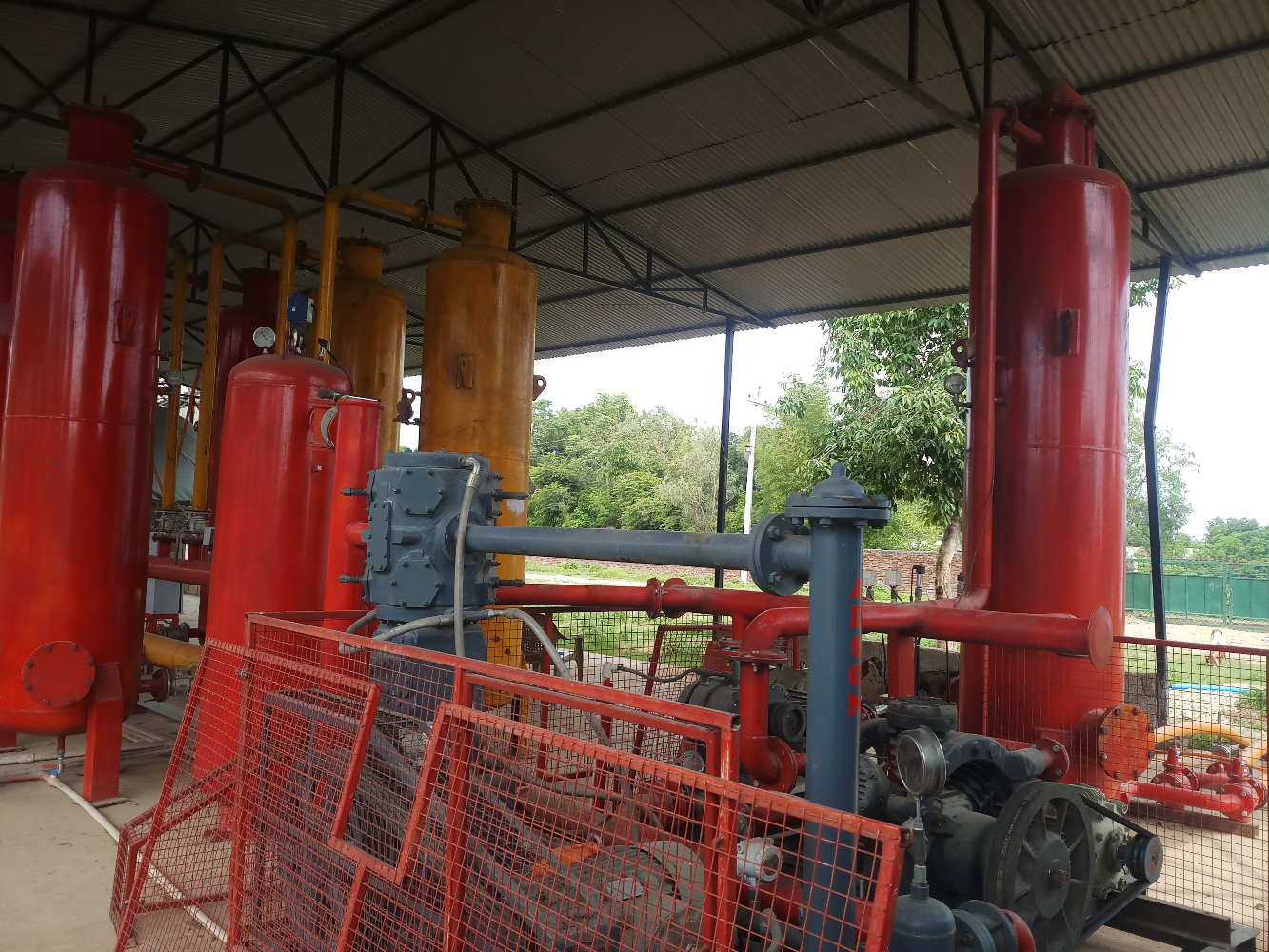Dang turns dung into energy
A town in Nepal sorts its trash to turn biodegradable bits into biogas for fuel and fertiliserWhile Mayor Balen Shah is finding it difficult to fulfil his election promise to solve Kathmandu’s garbage crisis once and for all, it might be prudent for him to visit Dang where a town has shown that it is possible to turn its trash into energy.
Nearly 90% of the garbage in Dang's semi-rural Ghorahi is biomass that includes kitchen waste, farm residue and livestock dung that can be turned into flammable methane gas. The rest is plastic, metal or glass that can be recycled, and only a small portion of it is left to be disposed of at a landfill site.
Laxmi Chaudhary's family is one of 32 households in two wards of Ghorahi that get gas piped in as a utility by the Sub-Metropolitan City with technical support from the Alternative Energy and Nepal Energy Development Company. Families used to depend on firewood, and then imported LPG cylinders for cooking.
Read also: Waste to value with biogas in Nepal, Sushmita Dulal

“When we were younger we used to forage for firewood in the forest after a long day in the field, then we switched to gas cylinders, but now I can just use the piped gas and it works even better,” says Chaudhary.
She used to be afraid of cylinders because there had been incidents where they exploded, but with piped gas there is no such fear. “It is as easy as turning on a faucet," she says.
Her neighbour Sushila Chaudhary is also delighted to have a gas pipe going straight to her kitchen. “Cooking is so easy now, and the kitchen is smokeless,” she says.
Read also: This is bullshit, Kunda Dixit

If Ghorahi can do it, there is no reason other towns and cities cannot do the same. Indeed, there are more than 350,000 household biogas plants in Nepal, and the cheap and maintenance-free underground dome digester designed here in the 1980s has been copied all over the world.
In addition, there have been attempts to produce biogas on an industrial scale. Gandaki Urja, a private company, is producing Compressed Natural Gas (CNG) and selling cylinders to hotels in Pokhara. A similar plant in Jhapa also supplies gas to parts of a town.
If scaled up to all seven provinces, industrial scale biogas would bring down Nepal’s LPG import, which has been growing rapidly in recent years. In the last fiscal year alone, Nepal imported nearly Rs60 billion worth of LPG from India.
Read also: Toilet Cafe, Aria Shree Parasai

Ghorahi Mayor Narulal Chaudhary has been strongly backing the biogas program, and says, “We are producing biogas from the city’s waste and piping it directly to stoves in people’s homes. We can share this knowhow with others.”
The Rs22 million project aims to ultimately distribute methane gas to 1,500 households after this pilot phase is over. Once meter boxes are installed, households will be charged based on their consumption. The project will be expanded to 750 households in the second phase.
“We can produce up to 2,000 cubic meters of gas daily when the gas plant operates at full capacity. For this, we need 30 tons of garbage per day,” says project coordinator Sharada Sharma. “When the waste from Ghorahi is not enough to feed the digester, we source additional farm waste from the district.”
Read also: Hurrah, Nepal’s future is in the dung heap, Naresh Newar

Mayor Chaudhary is so encouraged by the progress so far that he thinks Ghorahi can soon be declared garbage-free. The town even imports garbage generated by the other Sub-Metropolitan City in Dang, Lamahi.
And it is a win-win for the town which is now well on its way to managing its waste, generating gas for its inhabitants, and also producing fertilizer from the effluent. Organic fertiliser sells for up to Rs50 per kg and there is a perennial shortage of fertiliser in Nepal. The effluent has higher concentration of phosphates and nitrogen, essential for crops.
The agreement between the Ghorahi Sub-Metropolitan City and the Company spans 20 years following which the gas production and distribution facility will be handed over to the city.
Read also: Toilet-trained in Nepal, Aryan Sitaula

During this period, the Alternative Energy and Nepal Energy Development Company will provide the Sub-Metropolitan City with a 5% share of the profits generated from the facility.
Kathmandu’s garbage all ends up in Banchare Danda in Nuwakot, and locals have stepped up their opposition citing unkept promises. But if Kathmandu sorted its waste, recycled plastic, glass and metal, and generated gas from the biodegradable portion, very little of the trash would end up at the landfill site.
Perhaps the mayors of the dirtiest cities in Nepal should go on a study visit to Ghorahi to see how they do it.
Read also: More bullshit, Sonia Awale
Translated by Aayusha Pokharel from the Nepali original published on himalkhabar.com




